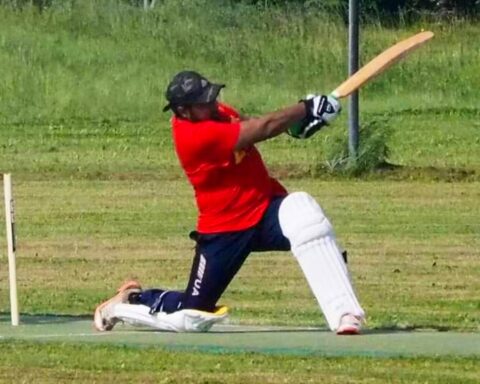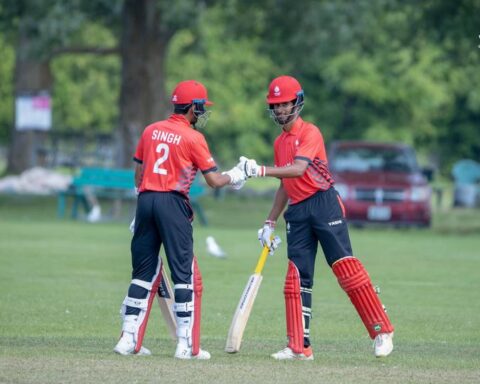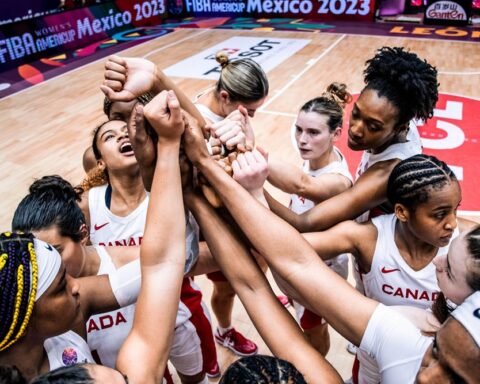Cricket is often viewed as an exotic or foreign sport in Canada, but the truth of the matter is that the game has been played in this country for the better part of a century, even before Confederation in 1867. Sir John A. MacDonald, Canada’s first prime minister, even declared it the young country’s official sport. Take that hockey!
Cricket’s Arrival to Canada
Like so many things, it is impossible to pin down an exact date for cricket’s arrival in Canada. The earliest record of the game is depicted in a painting of a match on Montreal’s picturesque Ile-Ste-Helene in 1785. However, its origins are often attributed to British soldiers engaging in a game following the Battle of the Plains of Abraham. That’s 208 years before the Toronto Maple Leafs won the team’s last Stanley Cup!
Just as cricket was originally brought to Canada by immigrants, its growing popularity can once again be credited to newcomers from lands where the sport reigns supreme, including India, Pakistan, West Indies, and Sri Lanka.
Cricket-speak
For those who come to Canada knowing the sport, it’s easy to pick it up again. But for new immigrants (or non-immigrants alike) who would like to take part, imagine having to learn the axioms and idioms of an unfamiliar sport.
Wickets, bowlers, batsmen and ball-overs. So much unusual terminology to decipher can be very confusing. Now you know how new Canadians feel trying to make sense of, “the skater with wicked flow splitting the D with her twig and biscuit to bulge the twine followed by a wicked celly.” Loosely translated, this is cricket-speak for she shoots, she scores.
The ins and outs
Where a hockey game has periods and goals played by six people on each of two teams, a cricket match has innings and runs played by 11 people on each of two teams. Both sports take place on oval-shaped playing surfaces: hockey on a rink, cricket on a pitch. The winning hockey team is the one with more goals than the opponent and the winning cricket team is the one with more runs than the opponent. That’s so similar and repetitive, you say. Seems easy enough to follow, right? Now the fun begins!
Instead of the stick and puck used in hockey, cricket’s main tools more closely resemble those in baseball, albeit with a longer and rectangular shaped bat.
Unlike a hockey period, which runs for 20 minutes of playing time, a cricket inning is based on a pre-determined number of six-ball overs. Translation? Instead of shifts beginning with face-offs, every delivery of the cricket ball from bowler to batsman is known as a ball.
The playing surface in hockey is marked with blue lines, face off circles, goal creases and nets. Cricket differs with a 22-yard pitch set within the smaller and innermost of two ovals. Instead of nets at either end of the rink, you’ll find a trio of stumps topped by two bails – smaller pieces of wood.
Unlike a hockey period, which runs for 20 minutes of playing time, a cricket inning is based on a pre-determined number of six-ball overs. Translation? Instead of shifts beginning with face-offs, every delivery of the cricket ball from bowler to batsman is known as a ball. Six balls is a one over. Matches are usually set to 20 or 50 overs regardless of how many days that takes. The exception is premier games such as test or first-class.
Courtesy of the Mississauga Ramblers Cricket, Sports, and Cultural Club, this footage is from one of the organization’s intra-club games and features the Hawkeyes in black and the Blasters in brown.
Seen this before?
Like baseball, it’s the batsman’s job to hit the ball and the farther it flies, the more runs can be scored. The batting team tries to score as many runs as it can in its innings, while the bowling team tries to restrict them to as few runs as possible or get all of their players out. Another similarity is that the best hit – reaching the field boundary – earns four runs. But cricket needs to keep us on our toes so it awards six runs if said shot doesn’t bounce before doing so. Keep those eyes on the bouncing ball.
Keep two batsmen on the field, all players other than the bowler and wicketkeeper from the bowling (pitching) team on the pitch and this cricket stuff is getting easier to follow.
The aim of the bowling team is to limit hits and get opposing players out. Sounds familiar, eh? Batsman gets bowled – out – when the bowler hits a wicket with the ball. Other reasons to get an out are:
Leg before wicket – umpire believes ball would have hit wicket if not for contact with anything other than the bat holding hand
Caught – similar to an out in baseball
Run out – multiple meanings, commonly called if no part of a batsman’s bat or body is grounded behind the crease and the bowling team puts the wicket down while ball in play
Stumped – when wicketkeeper puts wicket down while a batsman has moved beyond the popping crease and not attempted a run
All on-field decisions are made by two umpires. Some matches at higher levels might have a third referee and a match referee.
Keep two batsmen on the field, all players other than the bowler and wicketkeeper from the bowling (pitching) team on the pitch and this cricket stuff is getting easier to follow.
How does it end?
Saying a hockey game ended in a tie or draw means one and the same, that both teams scored the same number of goals. But, in cricket, same words, different definitions: a tie means both teams had the same number of runs when all innings were completed. In timed matches such as Test or first-class, a draw is called when the anticipated number of innings weren’t played.
Got all that? Just don’t try it on ice.




